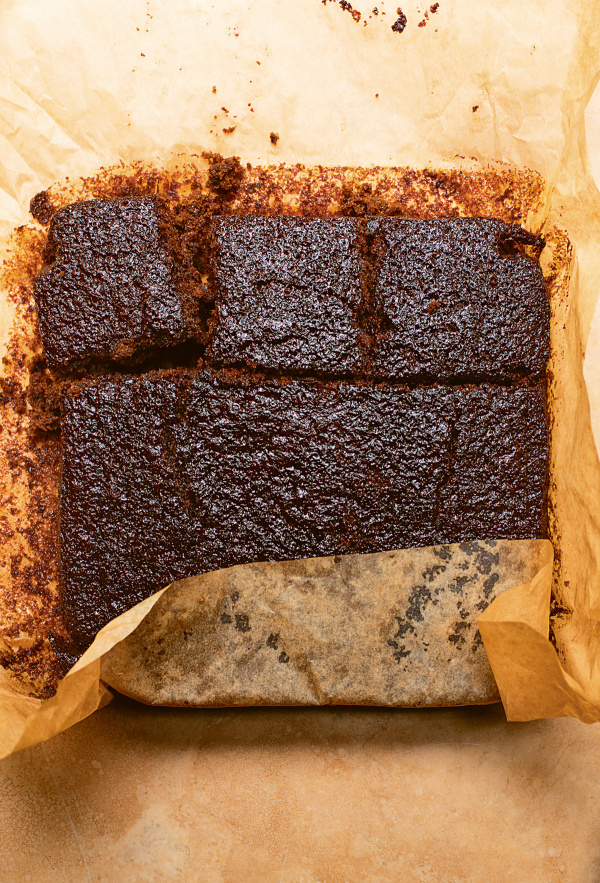Full question
My Luscious Vegan Gingerbread which I've made 4 times, has sunk twice out of the 4. I'm not sure what is causing this, possibly too much air getting in whilst whisking the flour in batches? I wanted to confirm if it's ok to not have the white flour lumps completely disappeared as this step does take a good while, and a lot of whisking, so could this be the reason? I measure everything properly and weigh the ingredients Nigella asks me to (treacle and syrup etc) so I can only imagine it's the amount of whisking that's the issue?
Our answer
Nigella's Luscious Vegan Gingerbread (from COOK, EAT, REPEAT) is a dark, treacly gingerbread that can be a teatime treat or served with poached or roasted fruit as a dessert. As the cake doesn't contain any eggs, the bicarbonate of soda (baking soda) is the main leavening agent. Too much bicarbonate of soda can cause the cake to rise up a lot and then sink back, so make sure that you measure this ingredient carefully with a 5ml measuring teaspoon and it should be a level teaspoonful. Make sure also that the bicarbonate of soda is fully dissolved in the warm water before adding it to the cake batter.
You don't want to mix too much air into the gingerbread batter as this can cause air pockets that give a bubbled surface to the gingerbread or collapse on cooling and cause craters. When you add the flour you could switch from a whisk to a wooden spoon or silicone spatula to reduce the amount of air being mixed in and if you get lumps of flour then you can squish them against the side of the saucepan to incorporate them into the batter. We would not encourage allowing too many lumps of flour in the batter as it is a fairly liquid batter and in our experience the lumps of flour don't always dissolve and leave spots of white flour in the baked cake.




-5a8c00f74f609.jpg)


Tell us what you think
Thank you {% member.data['first-name'] %}.
Explore more questionsYour comment has been submitted.